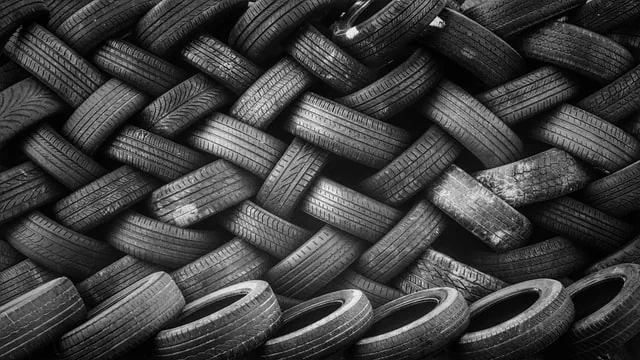
What Can Be Recycled at Home?

Table of Contents
Did you know that waste production is increasing at an alarming rate globally, and that threatens livelihoods? Imagine that an average person in Israel generates approximately 1.7 kilograms of waste per day. Worse still, waste production in the country is growing at 1.8% per year. Other nations are also struggling with this issue. In the United States, each person generates about 2 kg of municipal solid waste each day.
Since most of these wastes hurt the life of humans, animals, and plants and are costly to manage, the above figures clearly show that we may face many risks if we fail to act in time. Many items that often go into the landfill can be recycled at home, which shows that households have a vital role in managing waste. Read on why we need to give new life to our old items and the common ones that you can conveniently recycle at home without spending a lot of time and resources.
Why Recycling at Home is Important
If you haven’t been recycling your used items at home, find out how you can make a difference. If you already embrace this noble practice, discover your efforts’ positive effect and how to do much better. Here are the main reasons recycling at home is worth your time and effort:
-
Conserves Resources: When you recycle your old, used materials, you convert them into new products. So, it reduces the need to harvest additional natural resources to manufacture new ones. This helps to protect our natural habitats.
-
Protect the Environment: Manufacturing plants produce lots of pollutants and use a lot of water. They also use a lot of energy. When you recycle your items at home, you minimize the use of these resources, mitigate the risks, and reduce the impact of global warming.
-
Reduces Landfills: When our old items are converted into new products, the amount of wastes sent to the landfills reduces. This also minimizes the production of methane, a dangerous greenhouse gas.
5 Common Items that Can Be Recycled at Home
There are plenty of items that you can recycle at home. You do not need any expertise to convert them. However, it would be best if you did not attempt to recycle products that require advanced skills and are dangerous.
Here are some of the everyday items that you are free to recycle at home if you have some essential tools:
Disposable Plates and Cups
Unlike plastic utensils, disposable plates and cups are incredibly easy to recycle. They are also safe and made from biodegradable materials, such as potato starches, corn, paper, leaves of trees, plants, and wood.
These unique features are responsible for the soaring demand for this type of utensils. Whether it is a wedding party, christening, a family gathering, or any other party that you want to throw, you should consider opting for this alternative. After the party, ensure the guests do not toss these plates and cups in the trash where other wastes like plastic cups are. Disposable utensils are a great option since they have the following features:
- Consist of renewable materials
- Beneficial to the environment
- Reduce human contact with dangerous chemicals

Disposable plates, cups and balloons. pexels
Collect and recycle them instead of tossing them. The simplest way to do that is to shred and then put them beneath your mulch. This is a highly economical and safe way of supporting the growth of your plants and flowers.
Paper plates and cups decompose after a short while, meaning you can compost them to improve your farm’s nutrient content without the fear of risks. They also help to retain moisture. So, they can offer you more value than the many fertilizers out there made from toxic chemicals.
Junk Mails, Books, and Cards
Many people mail books, letters, and cards enclosed inside special envelopes. You can recycle most of these materials. To make the process easy, you should put a small recycling bin near the door where you retrieve your mails. This way, you can remember to give your mails and their content a new life as you walk back.
Remember, you will hardly relook at the papers after reading them for the first time. We never look at most of our mails after seeing or using them on the first day. If that is you, you should sort your emails into different categories. Some of them that you must keep include:
- Investment-related information
- Sentimental papers
- Bills
- Tax records
- Important booklets
You can also keep mails that need some action. If you can make the desired decision in a matter of minutes, do it. If not, you can schedule an appropriate time to deal with the issue. After that, you should strongly consider recycling the papers and envelopes.
Recycling junk mail can be geared towards boosting your efforts to go paperless at home. Other than giving the used hard copy-materials life again, here are other ways you can achieve your digitalization effort:
- Sign up for E-statements
- Pay bills online
- Digitize records
- Use cell phone, computer, or tablet for notes
- Digitize your signature
- Rethink your printing
- Rethink your subscriptions
- Switch to E-Reader or Kindle
Depending on your needs, you can also use your recycled junk mail and other paper-materials to d things such as:
- Apply in your home garden (Let worms break them down in a few weeks first)
- Clean windows (Use vinegar-and-water solution)
- Line your cabinet
- Start fire
- Cover car floor
- Paddle table
- Cover books
- Clean oven

Card on top of red envelopes Red Pexels
Old Tires
Old tires that are no longer used due to irreparable damage or tear and wear can also be recycled at home. This process involves converting the waste into raw materials that we need to make other important products. Here are the steps that you need to follow to recycle your end-of-life tires at home:

Bunch of tires
-
Collect the Tires: As you likely know, the process of recycling used tires takes some time. So, before you start the work, you need to collect and take them to your well-prepared workstation.
-
Shred the Tire: Use a tire shredder to cut the waste material into small pieces. Shreds of 2-inches are the most ideal. If you have a granulator with a screen at home, you place the shred inside it and scrap them at ambient temperatures. The screen helps you to track the sizes of your tire shreds. If you do not have this, you can use cryogenic systems to shred the tires by freezing them at incredibly low temperatures. You can use liquid nitrogen to cool them as required. After that, shatter the rubber further into smaller pieces by passing it through hammer mills.
-
Purify the Raw Material: Remove the steel particles using a strong magnet. Also, use air classifiers to separate the fiber from the other components. Now you have recycled rubber that can be used to make a wide variety of new products. Use water and detergents to clean the raw material and pack it for transportation to your preferred factories.
What can I do with old tires if I cannot follow the above steps to create this quality raw material? You can shred and use your old tires for your do-it-yourself projects. For example, you can use the material to make artworks, crafts, and sculptures.
Water

Water with green tress and leafs
Water is a scarce resource, but you can recycle and reuse it several times for different purposes. Here are some of the things that you need to recycle water at home:
-
Rain Barrels: Have a rain barrel in your backyard to collect usable water from the sky. If you want to drink it or use it for something involving food, boil or treat it with a suitable chemical.
-
Portable shower Bucket: This container can collect used water when you are bathing. You can use the water to clean your bathrooms and floors. Remember, more resilient plants in your garden may also need it.
-
Lemon Juice or Lemon Juice Soap: You can use this if your water has some grease, for example, from an oily meal. A few drops of the juice or soap can break it. After recycling the water, you can use it to water houseplants or clean toilets and sinks.
Aluminum Foil

Aluminum foils are easy to recycle. All you need to do is give them a quick rinse and put them in the curbside recycling container. A recycler can then make them into new cans and trays. However, at home, all you need to do is clean them. After that, you can use them for several purposes.
If you are growing some plants at home that requires a little bit more light, solve this by arranging pieces of clean aluminum foil behind them. Your worn-out aluminum foil can reflect sunlight towards the plants.
You also have the option to use your old aluminum foil to come up with new watertight packages for your photos, seeds, and more.
Wrap Up
Contrary to popular opinion, we have seen that recycling doesn’t have to be a difficult task. All you need is a positive mindset. Your home is likely a treasure trove of old items you can recycle at no cost. However, you may not appreciate that until you change your perspective of throwing everything into the landfill. Overall, since the benefits of recycling at home outweigh the demerits, it is likely the best time you consider it worth your attention.